
Discover the key reasons behind the surge in gold prices in 2025. This blog explores how inflation, currency devaluation, central bank purchases, geopolitical tensions, and rising investment demand are driving gold's value to new heights.
Introduction

Gold has always been considered a safe haven in times of economic uncertainty, and 2025 is proving no different. Investors around the world are witnessing a significant surge in gold prices, sparking interest and speculation about what’s driving this upward trend. From global economic shifts to geopolitical tensions, several interconnected factors are influencing the current bull run in the gold market. Understanding these forces is essential not only for investors but also for anyone trying to make sense of today’s economic climate. This blog breaks down the most critical reasons behind the rise in gold prices in 2025.
Inflation Pressures and Currency Devaluation
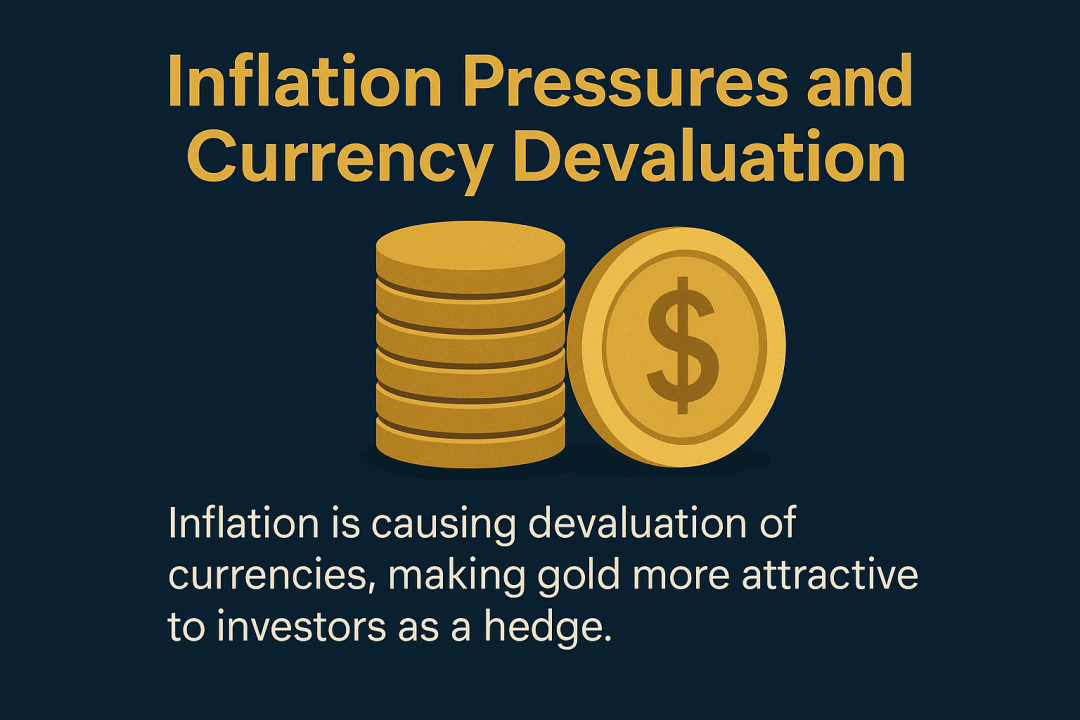
One of the most direct contributors to the surge in gold prices is the ongoing inflationary pressure in major economies. The U.S., Eurozone, and parts of Asia have been grappling with higher-than-expected inflation due to years of expansive monetary policy, supply chain disruptions, and elevated energy costs. When inflation rises, the purchasing power of fiat currencies declines, making gold more attractive as a store of value. In 2025, central banks have been cautious about raising interest rates too aggressively, fearing a slowdown in growth. This cautious stance has led to weaker currencies, particularly the U.S. dollar, which typically inversely correlates with gold prices. As a result, investors are flocking to gold to hedge against currency erosion and maintain the real value of their assets.
Geopolitical Instability and Global Uncertainty

Geopolitical tensions have been another key catalyst for gold’s rising value. In 2025, conflict zones in Eastern Europe, the Middle East, and escalating trade tensions between major world powers have unsettled global markets. Events such as military standoffs, sanctions, and diplomatic breakdowns often drive demand for safe-haven assets like gold. Moreover, with fears of potential cyber warfare and disruption in global trade routes, investors are increasingly parking their funds in gold rather than risk-prone equities or volatile commodities. The uncertainty surrounding global leadership and fragmented alliances further contributes to the perception of gold as a reliable, crisis-proof asset.
Central Bank Gold Purchases
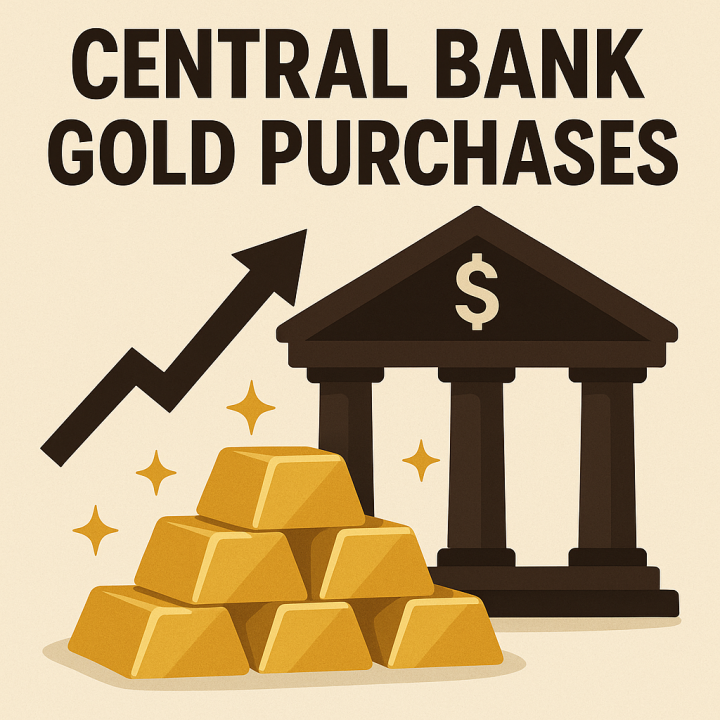
Another significant yet often overlooked driver of gold’s price rise in 2025 is the aggressive buying spree by central banks. Several countries, especially in Asia, the Middle East, and Eastern Europe, are diversifying their reserves by increasing gold holdings. These nations are aiming to reduce dependence on the U.S. dollar and shield themselves from potential sanctions or economic isolation. As central banks ramp up their gold reserves, the physical demand for the metal has skyrocketed. This increased institutional demand puts upward pressure on gold prices and signals to private investors that gold remains a foundational part of a stable financial system. Central banks’ confidence in gold only adds to its appeal in the current economic climate.
Sluggish Economic Growth and Recession Fears
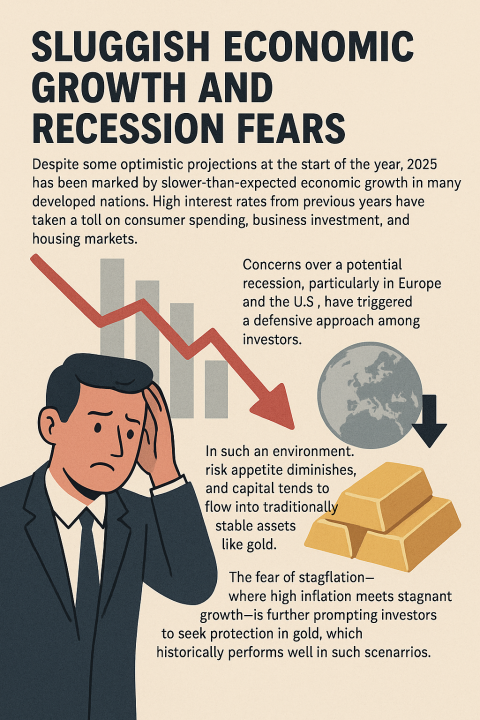
Despite some optimistic projections at the start of the year, 2025 has been marked by slower-than-expected economic growth in many developed nations. High interest rates from previous years have taken a toll on consumer spending, business investment, and housing markets. Concerns over a potential recession, particularly in Europe and the U.S., have triggered a defensive approach among investors. In such an environment, risk appetite diminishes, and capital tends to flow into traditionally stable assets like gold. The fear of stagflation—where high inflation meets stagnant growth—is further prompting investors to seek protection in gold, which historically performs well in such scenarios.
Technological and Investment Demand
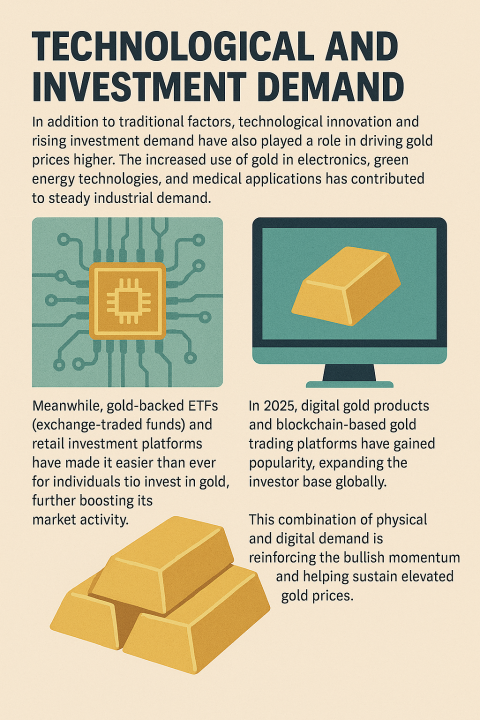
In addition to traditional factors, technological innovation and rising investment demand have also played a role in driving gold prices higher. The increased use of gold in electronics, green energy technologies, and medical applications has contributed to steady industrial demand. Meanwhile, gold-backed ETFs (exchange-traded funds) and retail investment platforms have made it easier than ever for individuals to invest in gold, further boosting its market activity. In 2025, digital gold products and blockchain-based gold trading platforms have gained popularity, expanding the investor base globally. This combination of physical and digital demand is reinforcing the bullish momentum and helping sustain elevated gold prices.
Conclusion
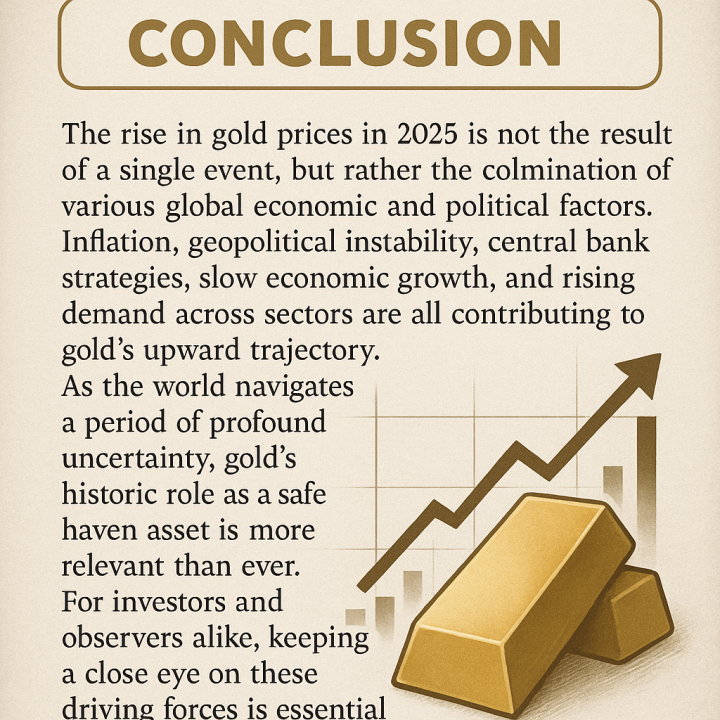
The rise in gold prices in 2025 is not the result of a single event, but rather the culmination of various global economic and political factors. Inflation, geopolitical instability, central bank strategies, slow economic growth, and rising demand across sectors are all contributing to gold’s upward trajectory. As the world navigates a period of profound uncertainty, gold’s historic role as a safe haven asset is more relevant than ever. For investors and observers alike, keeping a close eye on these driving forces is essential to understanding not just the price of gold, but the broader financial ecosystem in which it operates.